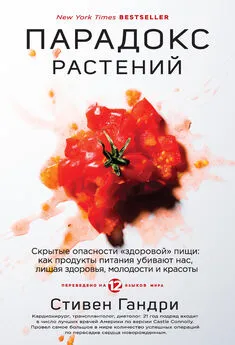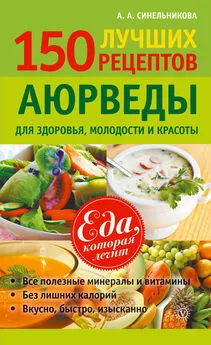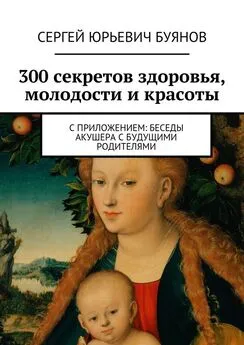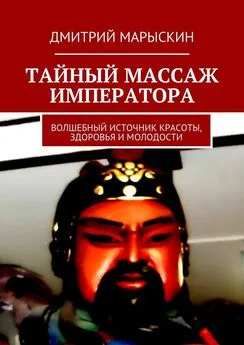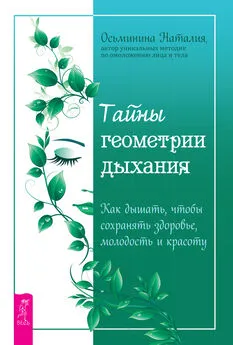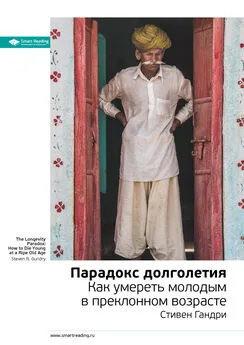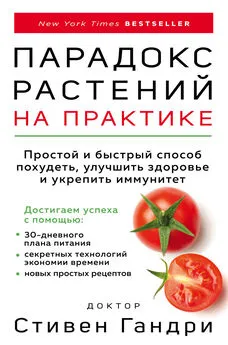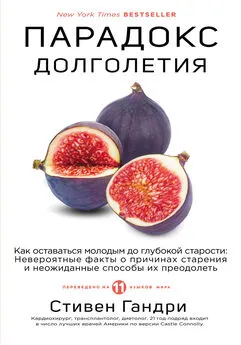Стивен Гандри - Парадокс растений. Скрытые опасности «здоровой» пищи: как продукты питания убивают нас, лишая здоровья, молодости и красоты
- Название:Парадокс растений. Скрытые опасности «здоровой» пищи: как продукты питания убивают нас, лишая здоровья, молодости и красоты
- Автор:
- Жанр:
- Издательство:Литагент 5 редакция
- Год:2018
- Город:Москва
- ISBN:978-5-04-093094-4
- Рейтинг:
- Избранное:Добавить в избранное
-
Отзывы:
-
Ваша оценка:
Стивен Гандри - Парадокс растений. Скрытые опасности «здоровой» пищи: как продукты питания убивают нас, лишая здоровья, молодости и красоты краткое содержание
Кардиолог и кардиохирург Стивен Гандри провёл ряд исследований, доказывающих, что некоторые насыщенные витаминами растительные друзья НЕ ХОТЯТ, чтобы их ели. Более того, они продумали механизм защиты, благодаря которому в организм покусившегося на них хищника впрыскивается парализующий яд. Чтобы впредь ни-ни!
Советуем узнать, как помидоры, тыква и тысячи других растений неизбежно губят ваш иммунитет, а также, как есть овощи правильно, чтобы избежать неприятных последствий!
Парадокс растений. Скрытые опасности «здоровой» пищи: как продукты питания убивают нас, лишая здоровья, молодости и красоты - читать онлайн бесплатно ознакомительный отрывок
Интервал:
Закладка:
13. Rizzello et al. 2007. Highly efficient gluten degradation by lactobacilli and fungal proteases during food processing: New perspectives for celiac disease. Applied and Environmental Microbiology 73(14): 4499–4507.
14. Cuadrado et al. 2002. Effect of natural fermentation on the lectin of lentils measured by immunological methods. Food and Agricultural Immunology 14(1): 41–44.
15. Fontes, M. 2010. Are sprouted legumes paleo? http://thepaleodiet.com/paleo-diet-q-a-sprouted-legumes/#.VmNKHF876nM. Открыто 4 сентября 2016 г.
16. Buchmann et al. 2007. Dihydroxy-7-methoxy-1,4-benzoxazin-3-one (DIMBOA) and 2,4-dihydroxy-1,4-benzoxazin-3-one (DIBOA), two naturally occurring benzoxazinones contained in sprouts of Gramineae are potent aneugens in humande rived liver cells (HepG2). Cancer Letters 246(1–2): 290–299.
17. You, W., and Henneberg, M. 2016. Meat consumption providing a surplus energy in modern diet contributes to obesity prevalence: an ecological analysis. BMC Nutrition 2: 22.
You, W., and Henneberg, M. 2016. Meat in modern diet, just as bad as sugar, correlates with worldwide obesity: an ecological analysis. Journal of Nutrition & Food Sciences 6: 517.
18. Fonteles et al. 2016. Rosemarinic acid prevents against memory deficits in ischemic mice. Behavioural Brain Research 297: 91–103.
19. Kim et al. 2016. Effects of linolenic acid supplementation in perilla oil on collagen-epinephrine closure time, activated partial thromboplastin time and Lp-PLA2 activity in non-diabetic and hypercholesterolaemic subjects. Journal of Functional Foods 23: 95–104.
20. de Lorgeril, M., and Salen, P. 2005. Dietary prevention of coronary heart disease: The Lyon diet heart study and after. World Review of Nutrition and Dietetics 95: 103–114.
21. Fahs et al. 2010. The effect of acute fish-oil supplementation on endothelial function and arterial stiffness following a high-fat meal. Applied Physiology, Nutrition, and Metabolism 35(3): 294–302.
22. Joelving, F. 2009. Lard lesson: Why fat lubricates your appetite. https://www.scientificamerican.com/article/lard-lesson-why-fat-lubri/#. Открыто 11 декабря 2016 г.
University of Michigan Health System. 2016. High-fiber diet keeps gut microbes from eating the colon’s lining, protects against infection, animal study shows. https://www.sciencedaily.com/releases/2016/11/161117134626.htm. Открыто 11 декабря 2016 г.
23. Viggiano et al. 2016. Effects of an high-fat diet enriched in lard or in fish oil on the hypothalamic amp-activated protein kinase and inflammatory mediators. Frontiers in Cellular Neuroscience 10: 150.
24. Bao et al. 2013. Association of nut consumption with total and cause-specific mortality. The New England Journal of Medicine 369: 2001–2011.
Aune et al. 2016. Nut consumption and risk of cardiovascular disease, total cancer, all-cause and cause-specific mortality: a systematic review and dose-response meta-analysis of prospective studies. BMC Medicine 14(1): 207.
25. Chen et al. 2016. Resveratrol attenuates trimethylamine-N-oxide (TMAO)-induced atherosclerosis by regulating TMAO synthesis and bile acid metabolism via remodeling of the gut microbiota. mBio 7(2): e02210-e02215.
26. Pottala et al. 2014. Higher RBC EPA + DHA corresponds with larger total brain and hippocampal volumes: WHIMS-MRI study. Neurology 82(5): 435–442.
27. Hanley, D.A., and Davison, K.S. 2005. Vitamin D insufficiency in North America. The Journal of Nutrition 135(2): 332–337. 26.
Cantorna et al. 2014. Vitamin D, immune regulation, the microbiota, and inflammatory bowel disease. Experimental Biology & Medicine 239(11): 1524–1530.
Глава девятая. Фаза 3
1. Nichols, H. 2016. Worldwide obesity: Meat protein has as much effect as sugar. http://www.medicalnewstoday.com/articles/312080.php. Открыто 6 сентября 2016 г.
You, W., and Henneberg, M. 2016. Meat consumption providing a surplus energy in modern diet contributes to obesity prevalence: an ecological analysis. BMC Nutrition 2: 22.
You, W., and Henneberg, M. 2016. Meat in modern diet, just as bad as sugar, correlates with worldwide obesity: an ecological analysis. Journal of Nutrition & Food Sciences 6: 517.
Vernaud et al. 2010. Meat consumption and prospective weight change in participants of the EPIC-PANACEA study. The American Journal of Clinical Nutrition 92(2): 398–407.
2. Pan et al. 2012. Red meat consumption and mortality: Results from 2 prospective cohort studies. Archives of Internal Medicine 172(7): 555–563.
3. Zamora-Ros et. al. “Mediterranean Diet and Non Enzymatic Antioxidant Capacity in the PREDIMED Study.” National Center for Biotechnology Information. U.S. National Library of Medicine, 2013. Web. 16 Feb. 2017.
4. Martínez-González et al. 2011. “Mediterranean diet and the incidence of cardiovascular disease: a Spanish cohort.” Nutrition, Metabolism, and Cardiovascular Diseases 21(4): 237–244.
Martínez-González et al. 2011. “Low consumption of fruit and vegetables and risk of chronic disease.” Public Health Nutrition 14(12A): 2309-15.
5. Schünke et al. 1985. Lectin-binding in normal and fibrillated articular cartilage of human patellae. Virchows Archiv A Pathological Anatomy and Histopathology 407(2): 221–31.
6. National Institute on Aging. 2012. NIH study finds calorie restriction does not affect survival. https://www.nia.nih.gov/newsroom/2012/08/nih-study-finds-calorie-restriction-does-not-affect-survival. Открыто 6 сентября 2016 г.
7. Colman et al. 2014. Caloric restriction reduces age-related and all-cause mortality in rhesus monkeys. Nature Communications 5: 3557.
8. Fontana et al. 2008. Long-term effects of calorie or protein restriction on serum IGF-1 and IGFBP-3 concentration in humans. Aging Cell 7(5): 681–687.
9. Vitale et al. 2012. Low circulating IGF-I bioactivity is associated with human longevity: findings in centenarians’ offspring. Aging 4(9): 580–589.
10. Conn, C.S., and Qian, S.B. 2011. mTOR signaling in protein homeostasis: less is more? Cell Cycle 10(12): 1940–1947.
11. Orlich et al. 2013. Vegetarian dietary patterns and mortality in Adventist health study 2. JAMA International Medicine 173(13): 1230–1238.
12. Grant, W.B. 2016. Using multicountry ecological and observational studies to determine dietary risk factors for Alzheimer’s disease. Journal of the American College of Nutrition 35(5): 476–489.
13. Drenick et al. 1972. Resistance to symptomatic insulin reactions after fasting. The Journal of Clinical Investigation 51(10): 2757–2762.
14. Owen, O.E. 2005. Ketone bodies as fuel for the brain during starvation. Biochemistry and Molecular Biology Education 33(4): 246–251.
Cahill, G.F., Jr. 2006. Fuel metabolism in starvation. Annual Review of Nutrition 26: 1–22.
15. McClure et al. 2007. Abstract 3642: Fasting, a novel indicator of religiosity, may reduce the risk of coronary artery disease. Circulation 116: II_826-II_827.
16. Choi et al. A diet mimicking fasting promotes regeneration and reduces autoimmunity and Multiple Sclerosis symptoms. Cell Reports 5(10): 2136–2146.
17. Bhammar et al. 2012. Effects of fractionized and continuous exercise on 24-h ambulatory blood pressure. Medicine and Science in Sports and Exercise 44(12): 2270–2276.
18. Obesity Society. 2016. Eating dinner early, or skipping it, may be effective in fighting body fat. https://www.sciencedaily.com/releases/2016/11/161103091229.htm. Открыто 1 декабря 2016 г.
Глава десятая. Парадокс растений: кетогенная программа интенсивной терапии
1. Nichols, H. 2016. Worldwide obesity: Meat protein has as much effect as sugar. http://www.medicalnewstoday.com/articles/312080.php. Открыто 6 сентября 2016 г.
You, W., and Henneberg, M. 2016. Meat consumption providing a surplus energy in modern diet contributes to obesity prevalence: an ecological analysis. BMC Nutrition 2: 22.
You, W., and Henneberg, M. 2016. Meat in modern diet, just as bad as sugar, correlates with worldwide obesity: an ecological analysis. Journal of Nutrition & Food Sciences 6: 517.
2. Vander Heiden et al. 2009. Understanding the Warburg effect: the metabolic requirements of cell proliferation. Science 324(5930): 1029–1033.
3. Fox, M. 2010. Cancer cells slurp up fructose, US study finds. http://mobile.reuters.com/article/idAFN0210830520100802?irpc=932. Открыто 6 сентября 2016 г.
4. Maalouf et al. 2009. The neuroprotective properties of calorie restriction, the ketogenic diet, and ketone bodies. Brain Research Reviews 59(2): 293–315.
5. Drenick et al. 1972. Resistance to symptomatic insulin reactions after fasting. Journal of Clinical Investigation 51(10): 2757–2762.
6. Gersch et al. 2007. Fructose, but not dextrose, accelerates the progression of chronic kidney disease. American Journal of Physiology. Renal Physiology 293(4): F1256-F1261.
7. Johnson et al. 2010. The effect of fructose on renal biology and disease. Journal of the American Society of Nephrology 21(12): 2036–2039.
8. Ananieva, E. 2015. Targeting amino acid metabolism in cancer growth and anti-tumor response. World Journal of Biological Chemistry 6(4): 281–289.
9. Mercola, J. 2014. Seven benefits of walnuts. http://articles.mercola.com/sites/articles/archive/2014/05/19/7-walnuts-benefits.aspx. Открыто 15 января 2017 г.
Глава одиннадцатая. Рекомендации по пищевым добавкам для программы «Парадокс растений»
1. American Heart Association. 2013. A diet low in grains, beans and certain vegetables—combined with “anti-aging” supplements—improved blood vessel function, in a new study. https://www.sciencedaily.com/releases/2013/05/130501193127.htm. Открыто 8 сентября 2016 г.
2. United States Government. 1936. Senate document #264. http://www.betterhealththruresearch.com/document264.htm. Открыто 8 сентября 2016 г.
3. Thomas, D. 2003. A study on the mineral depletion of the foods available to us as a nation over the period 1940 to 1991. Nutrition and Health 17(2): 85–115.
4. Cantorna et al. 2014. Vitamin D, immune regulation, the microbiota, and inflammatory bowel disease. Experimental Biology & Medicine 239(11): 1524–1530.
5. Stenblom et al. 2015. Consumption of thylakoid-rich spinach extract reduces hunger, increases satiety and reduces cravings for palatable food in overweight women. Appetite 91: 209–219.
6. Pottala et al. 2014. Higher RBC EPA + DHA corresponds with larger total brain and hippocampal volumes: WHIMS-MRI study. Neurology 82(5): 435–442.
Об авторе
Стивен Р. Гандри, доктор медицины, с отличием окончил Йельский университет, защитив диплом по биологической и социальной эволюции человека. После окончания Медицинского колледжа Джорджии (студенческое братство Альфа-Омега-Альфа) доктор Гандри работал в резидентуре общей хирургии и кардиоторакальной хирургии в Мичиганском университете и служил клиническим ассистентом в Национальных институтах здравоохранения. Он изобрел устройства, восстанавливающие поврежденные после сердечных приступов клетки; вариант этого устройства сейчас продается под названием Medtronic Gundry Retrograde Cardioplegia Cannula – это самый распространенный в мире прибор своего класса для защиты сердца во время операций на открытом сердце. После работы в Детском госпитале на Грейт-Ормонд-Стрит в Лондоне в отделении врожденных пороков сердца и двух лет преподавания в Медицинской школе Мэрилендского университета доктор Гандри был приглашен на должность профессора и заведующего кафедрой кардиоторакальной хирургии в Медицинской школе Университета Лома-Линда.
Читать дальшеИнтервал:
Закладка:
